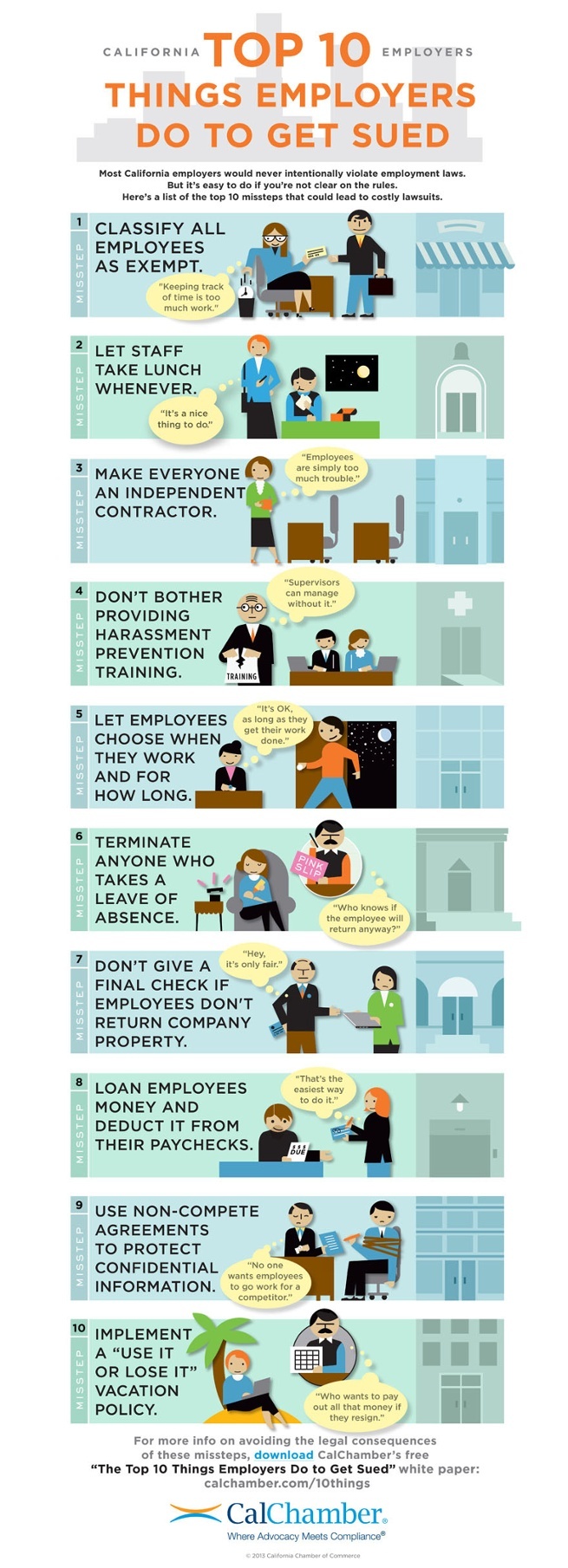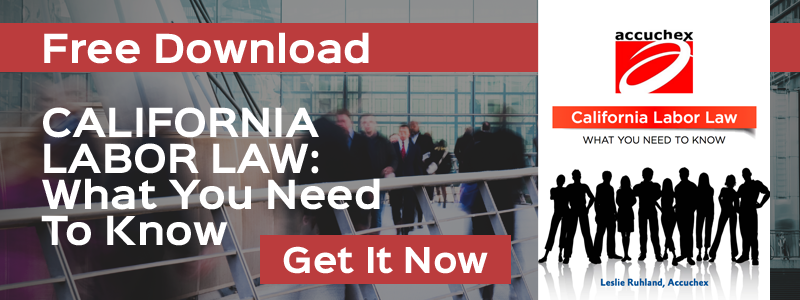One of constant fears for many employers and small business owners is the possibility of an employee lawsuit. HR best practices can minimize the risk.

There are issues such as hiring, employee classification, and wage requirements that call for HR best practices in order to ensure proper HR compliance.
A good strategy for HR management is to develop and implement processes for regularly reviewing and updating compliance procedures and the constantly changing labor laws. This cannot be left to chance or a simple, cursory overview.
One strategic tactic for staying ahead of the compliance changes is to designate one staff member as the "point person" for researching and updating compliance policies. In this way, you can ensure that your HR and payroll management practices are always up to date and in accordance with any annual changes.
Hiring and Employee Compliance and Discrimination for HR Management
It is generally understood that businesses cannot discriminate in hiring based upon race, color, religion, sex, age, disability or national origin. In addition, there are a number of questions that cannot be asked in a pre-employment interview. The same legal requirements for hiring also apply in the pre-employment interview process.
On the federal level, the U.S. Equal Employment Opportunity Commission (EEOC) enforces anti-discrimination laws. The EEOC website provides information that highlights some of the primary areas which can cause potential legal trouble for small business owners.
And in California, for example, any state level discrimination claims are submitted to the California Department of Fair Employment and Housing (DFEH). According the agency website, the California anti-discrimination statute covers some smaller employers not covered by federal law. This is defined as a workplace with between 5 and 14 employees (or one or more employees for harassment claims).
Employers Must Avoid Employee Misclassification
Unfortunately, the consequences of dealing with allegations of non-compliance can be time-consuming and costly, with fines, penalties, lawsuits and even jail time, in some cases.
The fines levied by the U.S. Department of Labor, IRS and state agencies for worker misclassification can be in the millions, depending on the severity of the infractions . The issues around employee classification should be managed carefully and diligently because of the very real threat of class action.
Not only is there simple employee misclassification mistakes that can be made, there are also wage law violations, I-9 violations, unemployment insurance issues, worker’s comp violations, improper exclusion from benefits, anti-discrimination violations, FMLA violations, and more.
Misclassification Fines and Penalties
Employers face potential costly penalties even for unintentional misclassification:
- $50 for each Form W-2 the employer failed to file by classifying workers as independent contractors
- 5 percent of the wages for failure to withhold income taxes
- 40 percent of FICA taxes that not withheld from the employee
- 100 percent of matching FICA taxes the employer should have paid
- Interest accrued on penalties daily from the date they should have been deposited
- Additional IRS fines and penalties if it suspects fraud or intentional misconduct
Worker Classification Compliance Tests
There is little standardization and even some conflicting “rules" when it comes to establishing worker classification. For example, it is possible for one test to define a worker as an employee while another test classifies the person as an independent contractor. The government provides several tests for employee classification compliance and these include the Economic Reality, IRS 20-Factor, Common Law, “ABC”, and so on.
The IRS 20-Factor test uses the degree of behavioral and financial control the employer exercises, as well as the type of relationship that exists between the two parties (written contracts or employee-type benefits), to determine whether or not a worker is an employee or independent contractor.
On the other hand, the Economic Reality test, relies on the economic dependence of a person on the employer as its litmus. What this means is, that under federal tax and labor law, contractors must have greater independence than employees, which limits their usefulness for most employers.
According to an article in the New York Times, “… if you tell someone when, where and how to work, you do not have a contractor relationship.”
Ensuring HR Compliance With Exempt and Nonexempt Status
Employees are covered under the Fair Labor Standards Act (FLSA) and are either designated exempt or nonexempt. Typically, salaried employees are exempt, while hourly employees are nonexempt and eligible to receive overtime.
The recent change by the FSLA, known as the Final Rule, is still in a legal battle. If it goes into effective as intended, the initial increases to the standard salary level will increase from $455 to $913 per week and HCE total annual compensation requirement will go up from $100,000 to $134,004 per year. Future automatic updates to those thresholds will occur every three years, beginning on January 1, 2020.
Until the Final Rule goes into effect, assuming it does, the current various criteria used when determining whether an employee is considered exempt or nonexempt includes:
Those earning less than $455 per week are nonexempt
The basis test means that a salaried employee generally has a specific amount that they can count on each pay period
The job duties test generally means that those with managerial duties and the ability to hire and fire are exempt employees
in 2015, for example, there were a record number of lawsuits filed because of alleged violations of the FLSA. One reason for this increase in claims may have been due to a better understanding of proper employee classification by workers. In 2015 alone there were 8,781 filed which represented an 8% increase from the previous year.
One reason for employee claims under the FLSA is incorrectly classifying an employee. Employees working overtime work as an exempt employees when their classification status should be nonexempt is a common example. New emphasis by the IRS and various state agencies, requires that companies be fully informed regarding proper employee classification of all their workers.

Payroll Management Best Practices and California Labor Law
Although outsourcing HR functions may not be the answer for every small business, the advantages and benefits are worth asking about. In addition to reducing your in-house costs, increasing accuracy and security, you can also benefit by freeing your limited HR resources for improving operational functions, recruiting efforts, and training.
As a business owner, or HR manager, you have a number of options for your HR and payroll functions. Software that can be installed in-house, or cloud-based programs offer a good alternative. But if you really want to take full advantage of the benefits available to you, outsourcing to a provider like Accuchex can still be the best decision.
Reliability, full-service options, and reputation are the hallmarks of a quality HR management service provider. If you are currently looking to invest in outsourcing you get your Free Download: California Labor Law guide to help you make an informed decision or call Accuchex Payroll Management Services at 877-422-2824.


